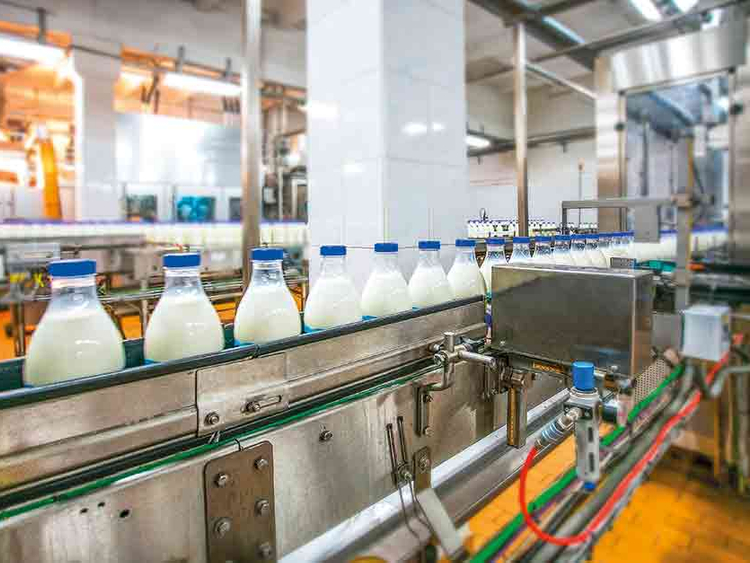The UAE presents a number of opportunities for dairy brands even as competition intensifies and shoppers seek greater nutritional value, interviews with industry insiders reveal.
Ahead of World Milk Day, GN Focus spoke to many key players in the industry, from researchers and retailers to dairy and dairy-alternative brands. The broad picture is of a mature sector coming nicely to the boil, although there were a few sour notes. Market expansion over the next five years will be driven principally by innovation and product diversification in response to consumer demand.
At the outset, research agency Euromonitor forecasts volume growth at a compounded annual rate of 7.1 per cent through to 2022, or a 41 per cent increase in value to $2.04 billion (Dh7.5 billion) from $1.45 billion today.
Food service makes up about a third of the market, and local players such as Al Rawabi, Al Ain Dairy, National Food Products Company (Lacnor) and Al Marai comprise the market’s top five alongside Dutch cooperative FrieslandCampina, whose Rainbow line has an emotional connect with UAE residents.
“The dairy industry in the UAE is expected to grow steadily over the forecast period,” food analyst Monique Naval tells GN Focus, dismissing any impact from the value-added tax launched earlier this year. “While VAT increases the cost of living in the country, the price increase for dairy is relatively small. Hence there will be minimal impact on consumer spending for dairy and it will increase value sales over the forecast period.”
Manufacturers agree that the tide has begun to turn after a worrisome year.
“The past 18 months have been somewhat challenging but we expect the growth trend to pick up from the second half of 2018 and accelerate in 2019-20 due to a more positive macro environment and increasing per capita consumption,” says Sumeet Mathur, Managing Director, FrieslandCampina Middle East. “Per capita dairy consumption is still not at the levels of Western Europe or the US and we expect consumption levels to keep rising.”
The transformative economic changes seen across the GCC in recent years will continue to present strong prospects for local and international brands. A rise in Westernised eating habits, for example, has seen French cheese sales improve, aided by the emergence of a category of consumers passionate about food and cooking, says Laurent Damiens, Communications Director of CNIEL, the French dairy board.
“Foodies are growing in number every year and international dairy producers are making every effort to seize this commercial
opportunity.”
Healthy culture
Health concerns underpin the biggest change in consumption patterns, shaping both overall growth and in-shop diversity, as consumers demand tasty beverages with significant nutritional value. Accordingly, advances will be stimulated by trends and innovations around natural and healthy, organic, vitamin-enriched, low-fat and products free from processed ingredients.
“The awareness around diet and health and the role it plays in your overall well-being has definitely increased,” says Rasmus Malmbak Kjeldsen, Senior Vice-President at Arla Foods Middle East and North Africa.
“Given the strong support by governments in the UAE to reduce lifestyle-related diseases and obesity, dairy has a key role to play in promoting healthier and balanced lifestyles, as well as driving real behaviour change. As a dairy industry we need to not just ride this wave but drive it in order to deliver attractive category growth.”
More than 60 per cent of UAE residents are willing to pay for the luxury of fresh, natural and minimally processed ingredients, says Manfred Kohlen, Senior Business Development Manager and Regional Advisory Chef, Fonterra Brands Middle East, citing an Anchor survey. Butter and full-cream dairy are back in fashion, he adds, while children’s growth-oriented milk powder, yoghurt and cheese are among the fastest growing categories.
Supermarkets are already milking the development across price points. Natural dairy products are now an important sales category across Spinneys Dubai outlets because they appeal to different nationalities, marketing manager Glen Thompson explains. “Lactose-free and vegan have started to show a lot more movement than before. We continue to see growth in plant-based dairy
replacements.”
Al Maya supermarkets now also carry a broader range of alternative options, says group director Kamal Vachani, who reports an increase in dairy sales for the year to date as compared to 2017.
“We not only have milk alternatives such as rice, soya and almond milks, but also cheeses made from these ingredients and soy and coconut yoghurts on our shelves,” he adds.
Innovative solutions
Product innovation is the name of the game for producers in the region and abroad. Fonterra’s Anchor Soft Style Cream Cheese has been promoted to food service professionals for its softer texture, greater stability and cost-effectiveness. FrieslandCampina’s Qubez, an instant karak chai launched late last year, was developed especially for the Gulf.
Sourya Das Gupta, Research Analyst at Mordor Intelligence, cites the example of dairy giant Al Rawabi: “Its new Super Milk includes essential nutrients such as vitamin A, D, E, calcium and folic acid, and has outperformed existing substitutes.
“Al Ain Dairy, one of the key dairy processing companies in the country, introduced camel-milk-based powder products in the recent past, the first of its kind across the world. Innovation in dairy products is expected to encourage food re-export to the GCC countries from the UAE.”
Against this scenario, homegrown milk brand Koita delivers long-life (or UHT-pasteurised) organic Italian dairy products straight to consumers’ homes. The range includes the region’s first hormone-free cooking creams and the first hormone- and lactose-free milk, CEO Mustafa Koita tells GN Focus, and its fastest growing categories are organic and lactose-free. “In the West we see organic conversion in the 20-30 per cent ranges. Here the industry is just getting started.”
However, despite the sector’s impressive churn, there are several hurdles to be overcome. Consumer education continues to be a major issue, Koita says, offering his own company’s example. “Consumers are sometimes confused about how Koita UHT Milk can also be organic. We are constantly educating consumers about how all milks are pasteurised — even fresh — and how our milk’s pasteurisation process only uses steam to heat up the milk.”
For importers, Mathur points to exchange rates. “The only challenge I can see for the short term is in currency rates — given that EU countries supply a large share of the UAE’s imports of retail dairy products, a stable exchange rate is very important to importers,” he explains.
As the UAE market heats up over the medium term, the companies that rise to the top will necessarily be responsive, agile and customer-focused.
High-tech dairy farms
Technology’s all-pervasive dispersion now extends to dairy farms. With the planet hurtling towards a population of more than 9 billion over the next couple of decades, the United Nations says food production will need to increase by up to 70 per cent across all categories.
In the dairy sector, stakeholders across the value chain, from farmers to retailers, have embraced technology as a way of doing so.
Developments in feeding and breeding technologies and the availability of sensors are helping dairy farmers run their operations, Kees de Koning, Dairy Campus Manager at Wageningen University and Research, the Dutch knowledge centre for dairy farming and dairy chains, tells GN Focus. As average herd sizes grow, technology will help farms monitor the different processes around their animals in order to improve their business. Through the use of such sensors with adequate data management, the needs of animals, farmers, consumers and the environment can be taken into account.
“Automatic milking machines where cows are being milked voluntarily 24 hours a day will become even more popular in dairy countries with high labour costs,” says de Koning. “In general, sensor technology supporting farmers to manage and to monitor cows’ health status, feed intake, fertility and milk production are entering the livestock farming industry.
“Cows are going digital too.”
Future applications could show up across the production line. Newly developed bio materials could be used to reduce packaging waste, for example — something Dutch researchers are working on.
— K.J.F.













